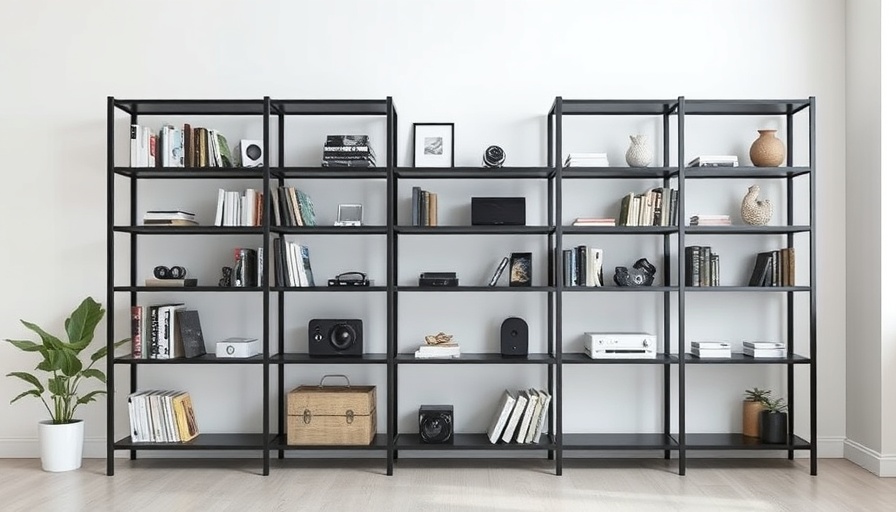
Maximizing Your Space: The DIY Revolution
Are you looking to breathe new life into your home while maximizing every inch of space? For many homeowners, particularly those in the 40 to 65 age range, finding practical and aesthetically pleasing solutions is essential. One such solution is metal shelving, which can transform how your living area looks and functions.
Metal shelves add a modern touch to any room while providing robust storage capacity. Ideal for those looking to declutter, these versatile units can accommodate everything from heavy tools in the garage to plants and decor in your living areas. With the right approach, installing them can be a rewarding DIY project.
Why Metal Shelves Stand Out
The appeal of metal shelves lies in their numerous benefits:
- Durability: Constructed from materials like steel, metal shelves boast exceptional longevity. Unlike wood, they don't warp or rot, making them perfect for damp basements or hot garages.
- Load Capacity: Their sturdy design allows them to support heavier items than plastic or wooden shelves—ideal for all your storage needs.
- Versatility: Available in a variety of styles and finishes, metal shelves can complement both industrial and modern home decor.
- Easy Maintenance: Simple to clean and resistant to pests, maintaining metal shelves is hassle-free—just a damp cloth is often sufficient!
Preparing for Your DIY Adventure
Ready to dive into installing metal shelves? Start by selecting the right kind of shelving based on your storage needs and space availability. Here’s how to go about it:
- Choosing the Right Shelving: Determine the size and the weight capacity—different shelves serve different purposes. Heavy-duty shelves might suit your garage, while lighter, decorative models could be perfect for your living room.
- Gathering Your Tools: Assemble the essentials before you get started. You’ll need a power drill, a level, a measuring tape, screws, and safety goggles. If your shelves come with brackets, a stud finder will be necessary.
Step-By-Step Installation Process
- Marking Your Location: Use your measuring tape to find the perfect height for your shelves. Mark spots for your brackets using pencil.
- Drilling the Holes: Carefully drill into the wall at your marked points. Ensure that you keep the drill straight to avoid uneven shelves.
- Attaching the Brackets: Secure the brackets with screws, using the level to ensure they’re perfectly vertical.
- Placing the Shelves: After securing the brackets, place the metal shelves on top. Ensure they are stable before adding any items.
Common Challenges and How to Overcome Them
While installing metal shelves is generally straightforward, homeowners might face common challenges. For instance, aligning the brackets can be tricky. A helpful tip is to use painter's tape on the wall to visualize where each bracket will go before drilling holes. Additionally, some surfaces might not easily accommodate wall anchors; it’s vital to use appropriate anchors for your wall type.
Think Beyond Storage: Aesthetics and Functionality
Once your metal shelves are up, think about how you can style them. Decorative items can bring personality to your shelves, making them functional and lively. Incorporating plants, art, or books not only enhances visual interest but can also contribute to your home’s ambiance.
Transforming your living space doesn't have to be overwhelming. With metal shelving and a bit of creativity, you can efficiently utilize your home’s potential while enjoying the satisfaction of a job well done.
Take Action Today!
Why wait to upgrade your home’s storage capabilities? By embracing this DIY project, you can maximize your space, enjoy the benefits of a tidy environment, and add personality to your home decor. Get started today, and discover how metal shelves can change your living space!
 Add Row
Add Row  Add
Add 




Write A Comment